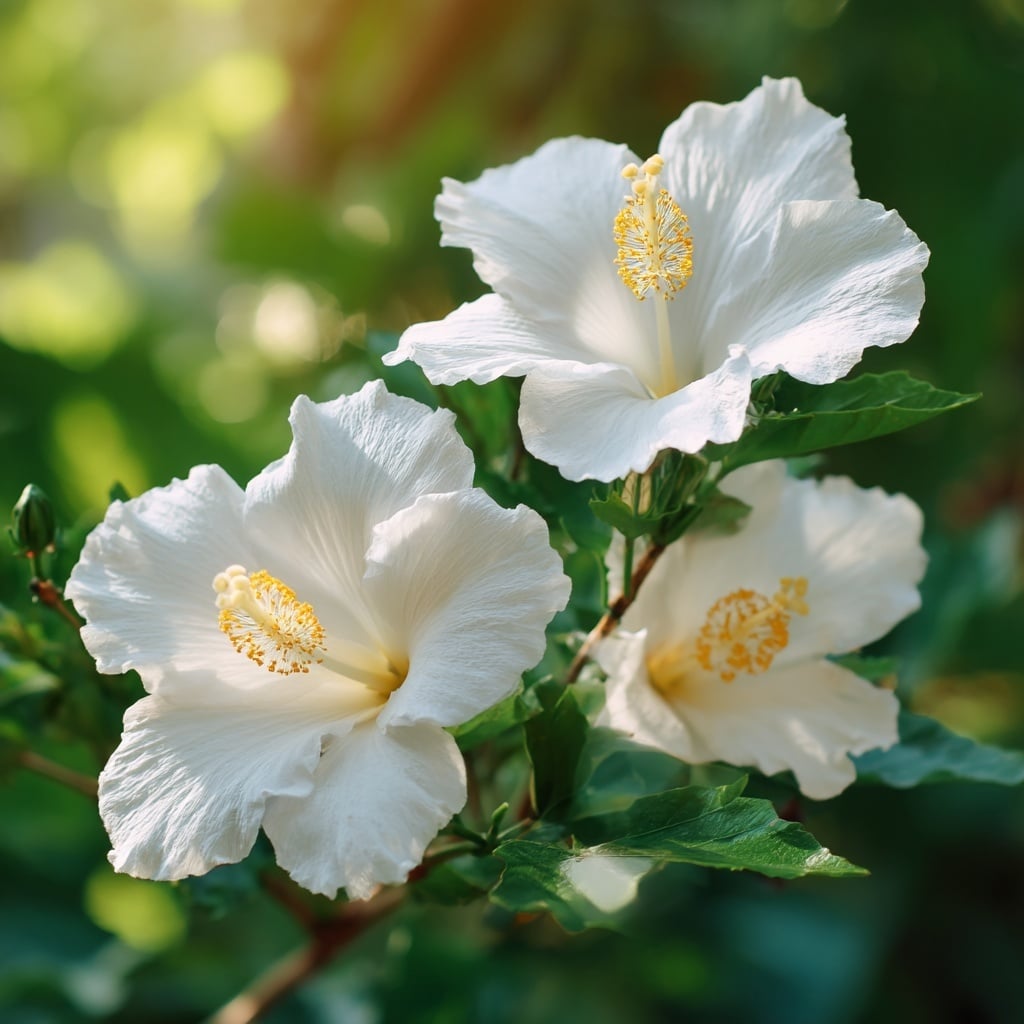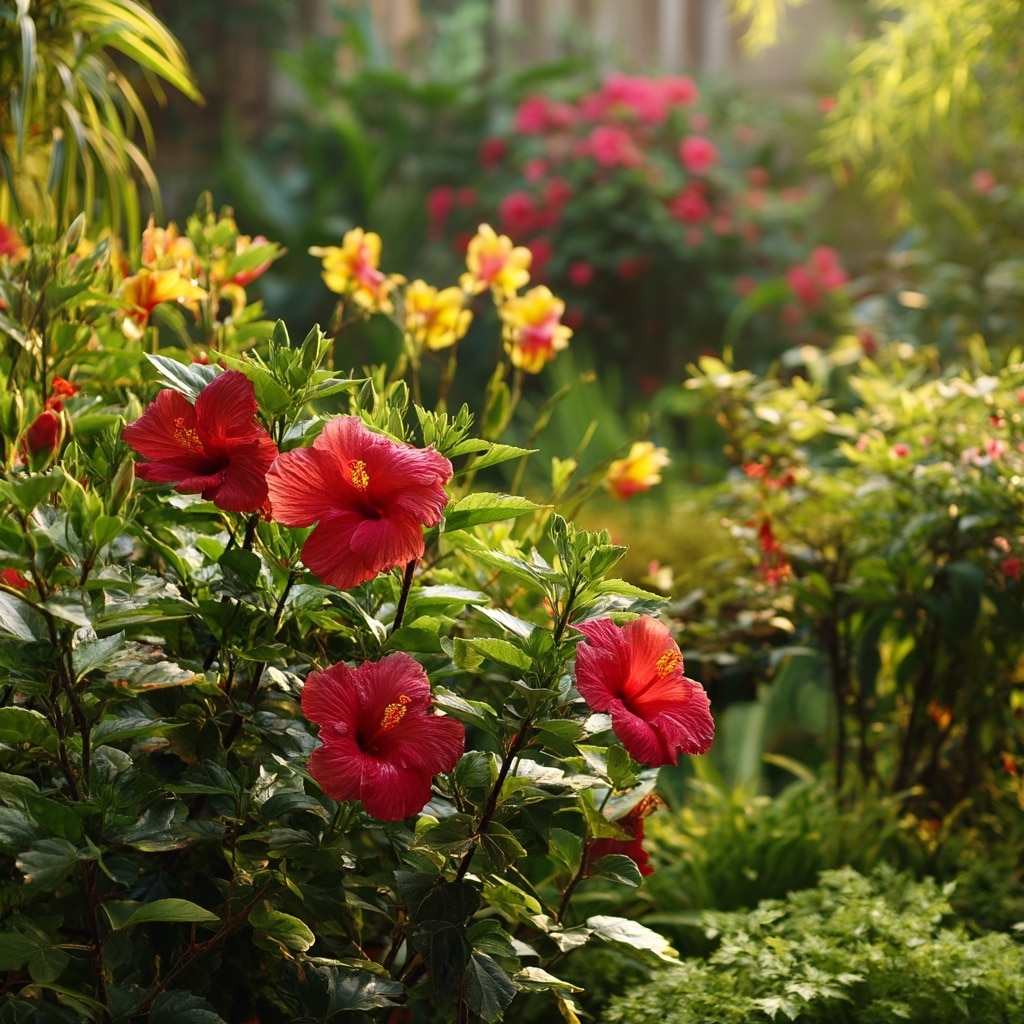Hibiscus flower plants bring a burst of tropical charm and elegance to any garden. Known for their large, trumpet-shaped blooms and vibrant colors, hibiscus flowers instantly transform ordinary spaces into lush, eye-catching landscapes. Whether you live in a warm coastal region or a cooler temperate zone, there’s a hibiscus variety that can thrive beautifully in your garden. These flowers not only attract hummingbirds and butterflies but also serve as stunning focal points in landscapes or container gardens.
In this guide, we’ll explore the most captivating hibiscus flower colors, from vivid reds to serene blues, and share essential growing tips to keep your plants healthy, lush, and full of blossoms all year long.
1. Understanding Hibiscus Plants
Tropical Hibiscus
Tropical hibiscus varieties, such as Hibiscus rosa-sinensis, are known for their glossy, dark-green foliage and bright, exotic blooms. They thrive in warm, humid climates and make an excellent choice for patios or balconies when planted in containers. These types of hibiscus flowers come in a range of bold shades—red, orange, yellow, and pink—and bloom almost year-round in frost-free regions.
Hardy Hibiscus
If you live in an area that experiences cold winters, hardy hibiscus plants like Hibiscus moscheutos are perfect for your garden. These perennials die back in winter but return every spring with even larger, dinner-plate-sized flowers. Hardy hibiscus flowers often display softer tones—white, pink, or mauve—and are surprisingly easy to care for, making them a favorite among gardeners seeking resilience and beauty.
2. Purple Hibiscus: A Touch of Royal Elegance
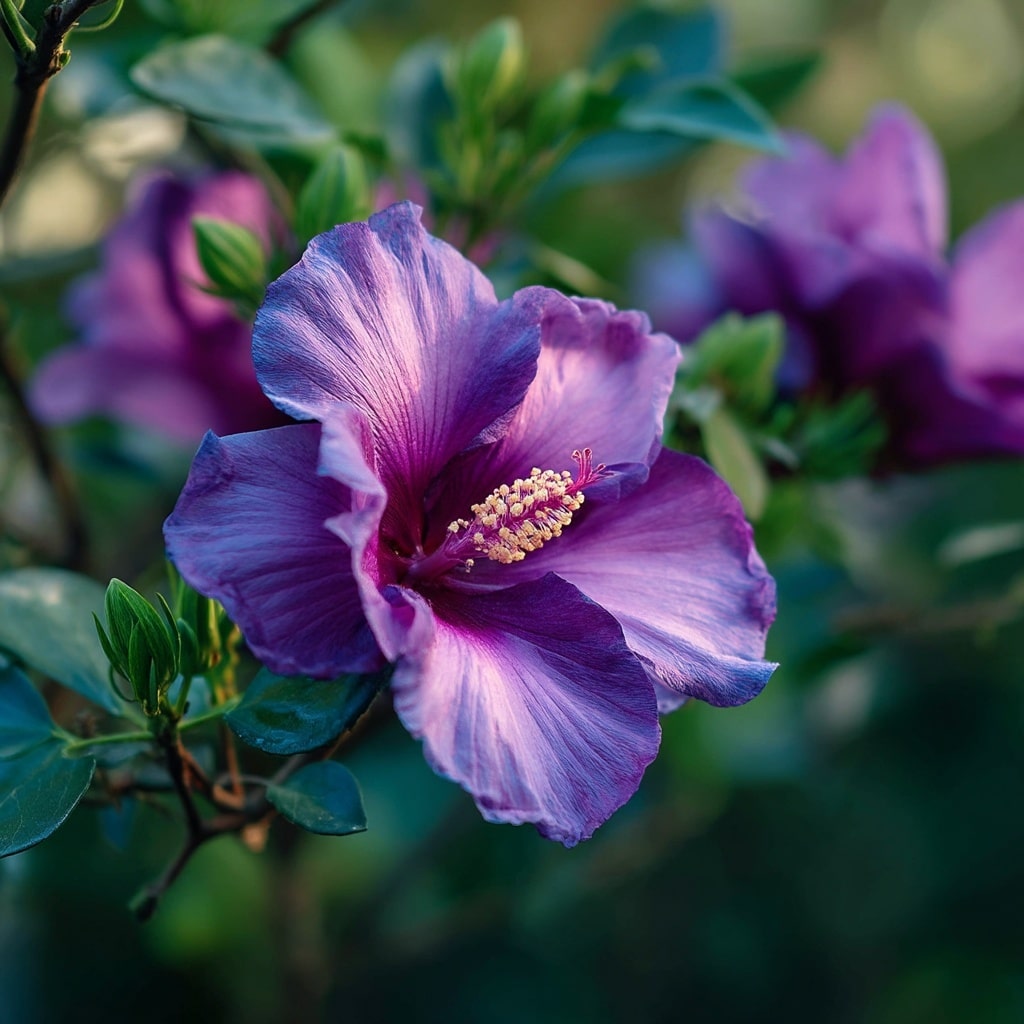
Among all hibiscus flower colors, the purple variety exudes an air of mystery and sophistication. These blooms are often associated with creativity, calmness, and luxury, making them an enchanting addition to gardens that aim for a serene and elegant aesthetic.
Purple hibiscus flowers often come in soft lavender tones or deep violet shades, sometimes with delicate contrasting centers. Varieties such as Hibiscus syriacus ‘Woodbridge’ or Bluebird display this regal hue beautifully. They work perfectly along borders, mixed flower beds, or as stand-alone accent plants.
Pair purple hibiscus with silver foliage plants like dusty miller or lamb’s ear to highlight their striking color. When placed near patios or seating areas, their subtle fragrance and lush petals create a peaceful, visually captivating atmosphere.
3. Yellow Hibiscus: Bright and Cheerful Blooms
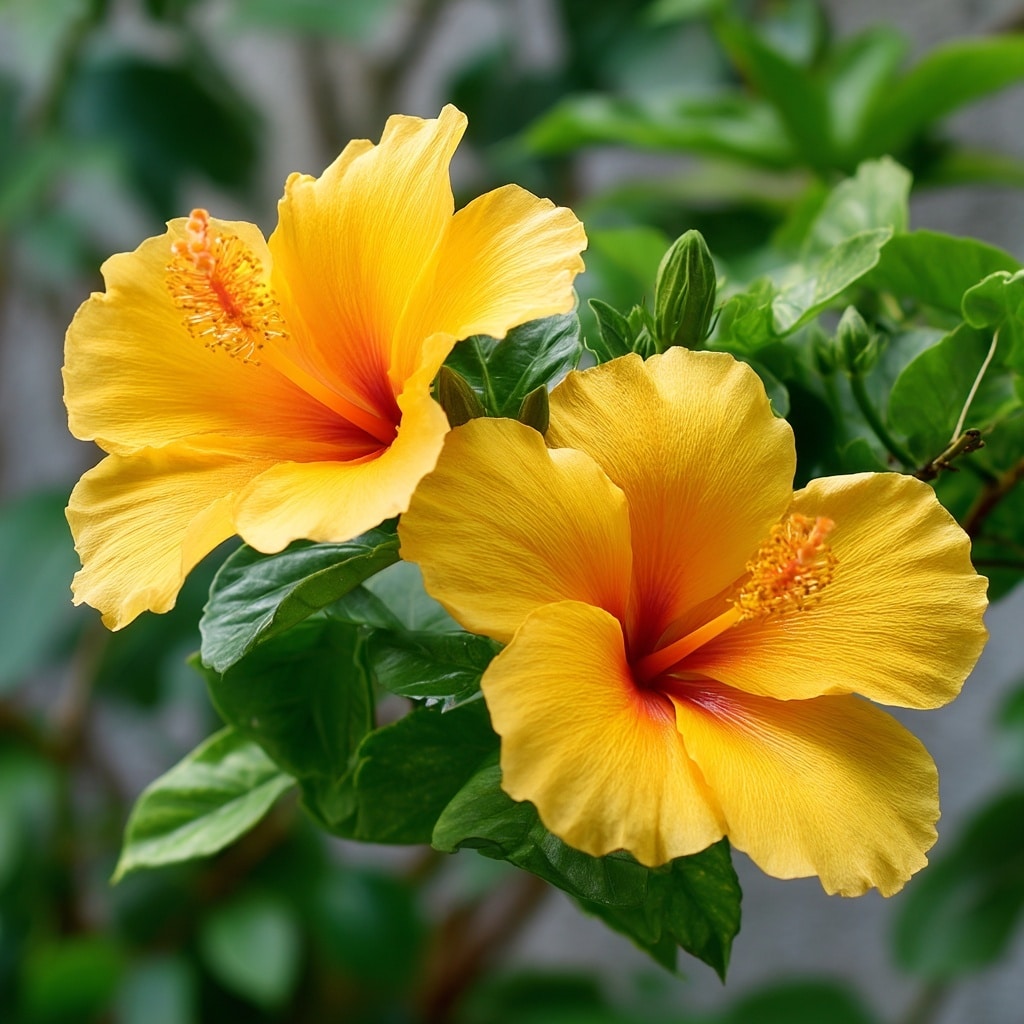
The hibiscus flower in shades of yellow brings sunshine straight into your garden. Symbolizing happiness, positivity, and friendship, yellow hibiscus varieties are perfect for brightening up outdoor spaces and adding warmth to any landscape design.
Tropical cultivars like Hibiscus rosa-sinensis ‘Sunny Wind’ and ‘Brilliant Yellow’ are beloved for their glowing, golden petals that radiate energy. Some even feature red or orange centers, giving the blooms an extra burst of contrast and depth.
Plant yellow hibiscus near darker green foliage or along fences to create a vibrant, tropical look. These cheerful flowers also pair beautifully with blue or purple blossoms, helping to balance warm and cool tones in your garden palette.
To keep them blooming abundantly, ensure they receive full sun and regular watering—yellow hibiscus flowers truly shine when bathed in sunlight.
4. Blue Hibiscus: A Rare and Captivating Beauty
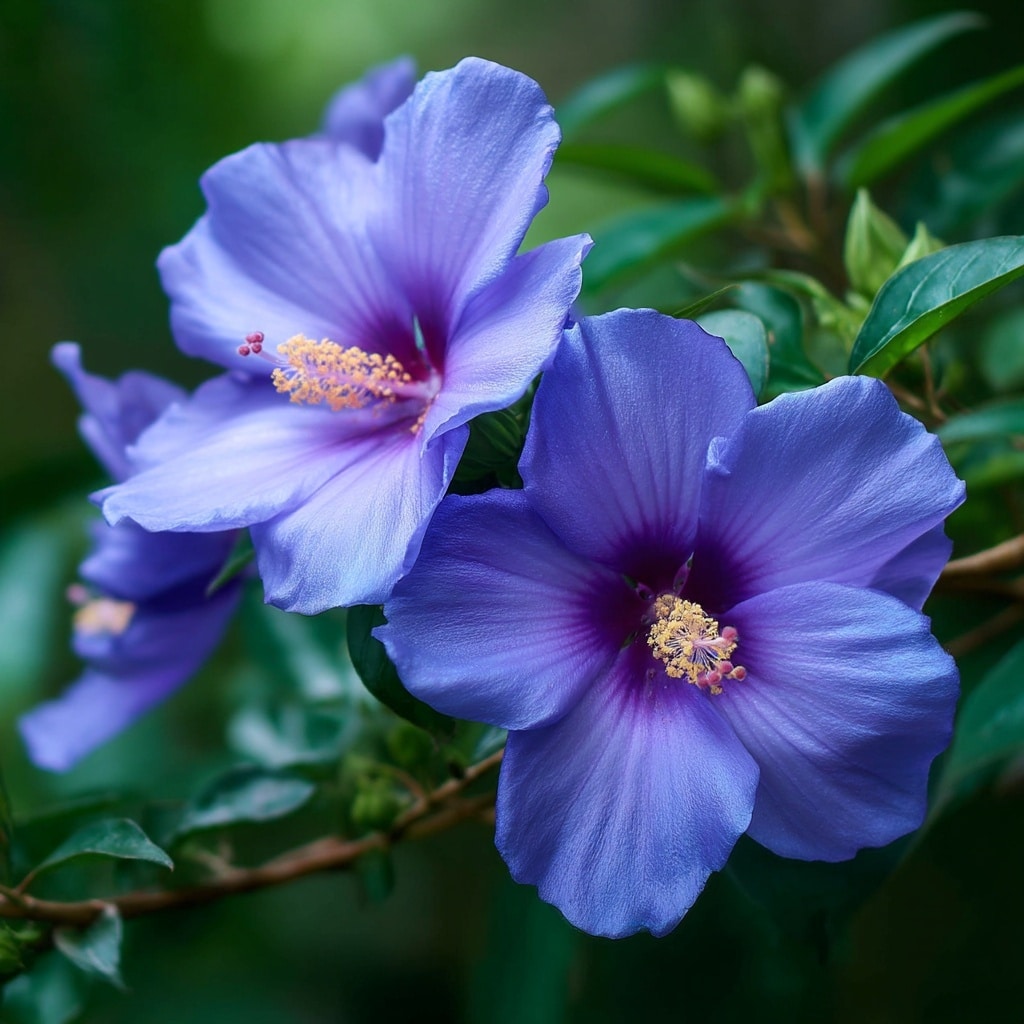
The hibiscus flower rarely appears in true blue, making blue-toned varieties especially striking and sought after by gardeners. While not a pure blue, these blossoms often showcase cool shades of lavender-blue or periwinkle that give the illusion of a serene, ocean-inspired hue.
One of the most popular types is Alyogyne huegelii, commonly known as the “Blue Hibiscus.” Native to Australia, it’s actually a hibiscus relative but carries the same lush, velvety petals and elegant shape. Its blooms feature a deep purple throat that gradually fades to a soft blue toward the edges—perfect for adding a tranquil touch to your landscape.
Plant blue hibiscus near white or yellow flowers for stunning contrast, or use them in coastal gardens where their color echoes the sky and sea. These flowers thrive in well-draining soil, full sun, and moderate watering—ideal for gardeners who love low-maintenance elegance.
5. Red Hibiscus: Bold and Passionate Color for Your Garden
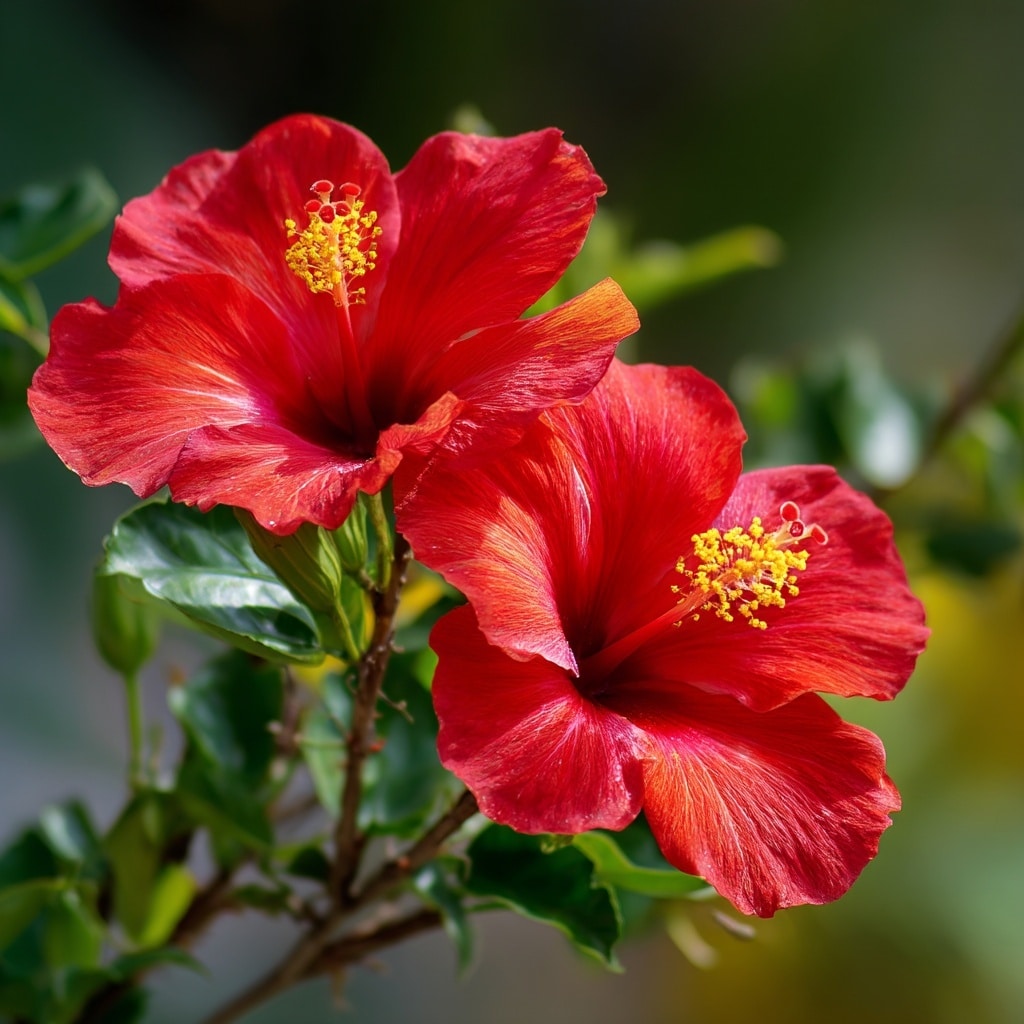
The hibiscus flower in red stands as a timeless symbol of love, passion, and vitality. Its fiery hue captures attention instantly, making it one of the most popular choices among gardeners who want to add drama and intensity to their landscapes.
Varieties like Hibiscus rosa-sinensis ‘Brilliant Red’ and Hibiscus coccineus (Scarlet Rose Mallow) display large, vibrant petals that can turn any garden corner into a showstopper. Red hibiscus flowers also attract pollinators such as butterflies and hummingbirds, bringing even more life and movement to your space.
Plant them near light-colored walls or pathways to make their color truly stand out. With plenty of sunlight, regular watering, and balanced fertilization, red hibiscus will reward you with continuous, eye-catching blooms from spring through fall.
6. White Hibiscus: Pure and Elegant Blooms
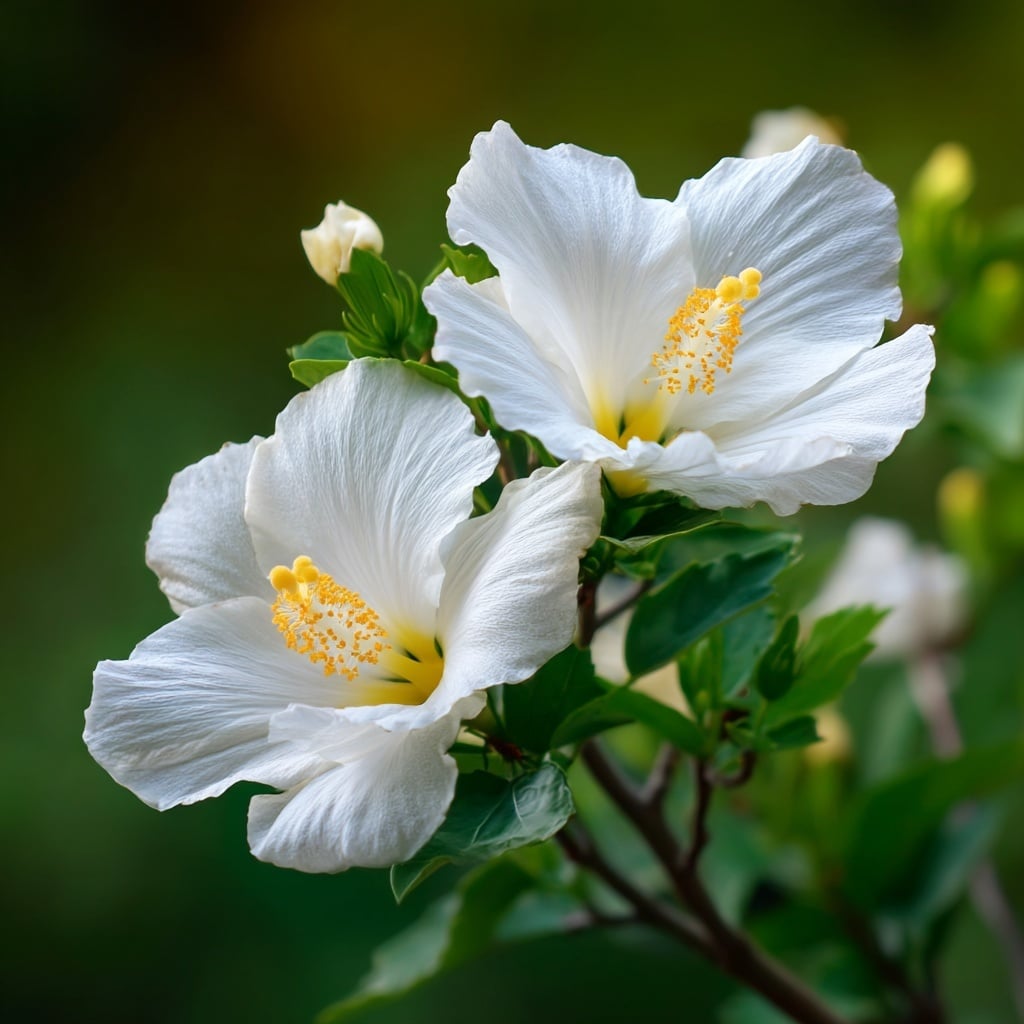
The hibiscus flower in white radiates simplicity, peace, and timeless beauty. Its crisp, clean petals add an elegant touch to any garden, making it a perfect choice for those who prefer a classic and serene atmosphere.
White hibiscus varieties, such as Hibiscus arnottianus (Hawaiian White Hibiscus) or Hibiscus syriacus ‘Diana,’ are known for their stunning pure-white blooms often accented by pale yellow or pink centers. These varieties are especially enchanting when planted against darker foliage or colored backdrops, allowing their brightness to truly shine.
In garden design, white hibiscus flowers create a refreshing contrast and pair wonderfully with blue or purple plants for a sophisticated palette. Their blossoms also glow beautifully under moonlight, adding magic to evening garden views.
For best results, give them full sun, consistent moisture, and well-draining soil. With minimal effort, white hibiscus can bring a touch of grace and harmony to any outdoor space.
7. Pink Hibiscus: Soft, Romantic, and Versatile
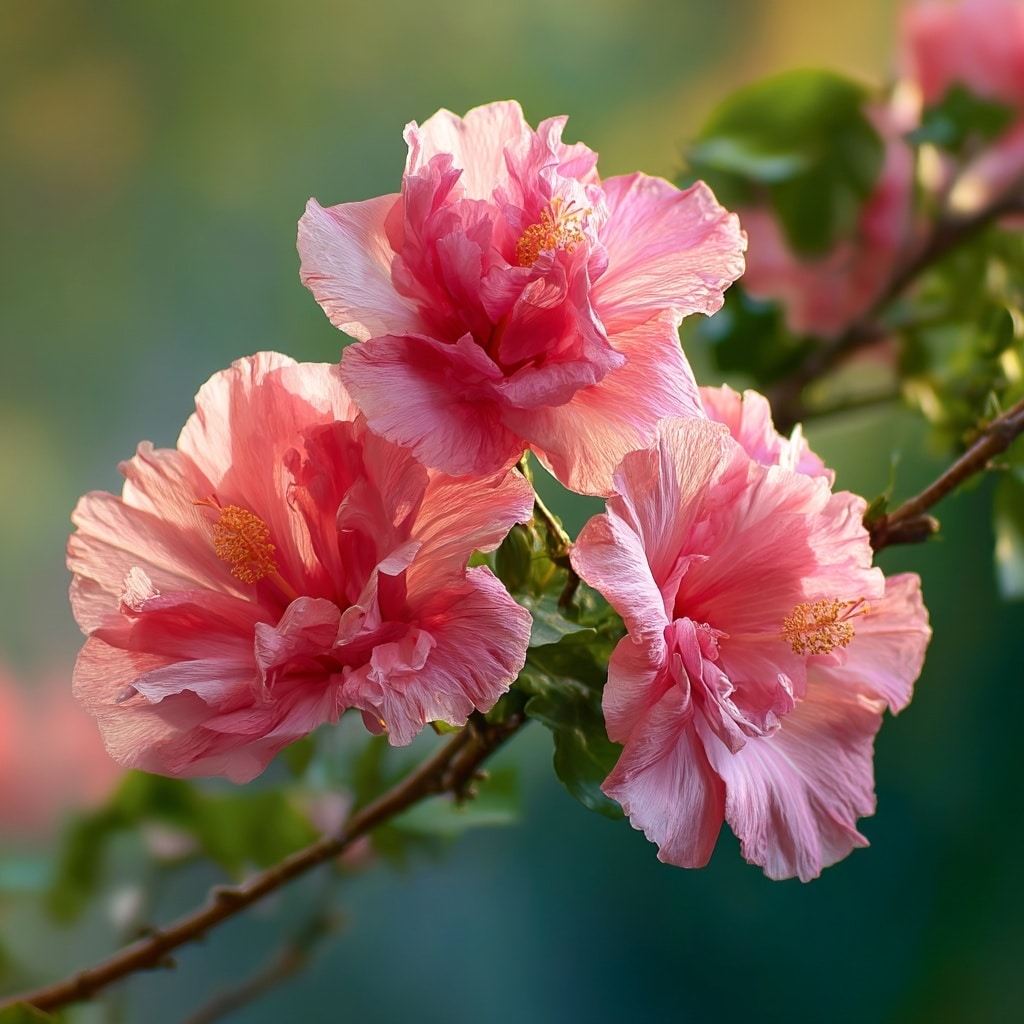
The hibiscus flower in pink embodies charm, love, and gentle beauty. Its versatile hues range from pale blush to deep rose, making it one of the most beloved choices for home gardens and landscapes. Pink hibiscus flowers effortlessly create a soothing, welcoming vibe while blending beautifully with almost any color scheme.
Popular varieties include Hibiscus rosa-sinensis ‘Pink Chiffon’ and Hibiscus moscheutos ‘Disco Belle Pink.’ These cultivars produce large, velvety blooms that often feature ruffled petals or contrasting centers, enhancing their romantic appeal.
Pink hibiscus pairs wonderfully with white, lavender, or yellow flowers to create a dreamy, balanced palette. Use them to frame walkways, accent patios, or highlight seating areas for a soft, inviting look.
Keep them thriving by providing at least six hours of sunlight daily, watering regularly, and feeding with a high-potassium fertilizer during the blooming season.
8. Caring for Hibiscus: How to Keep Your Blooms Thriving
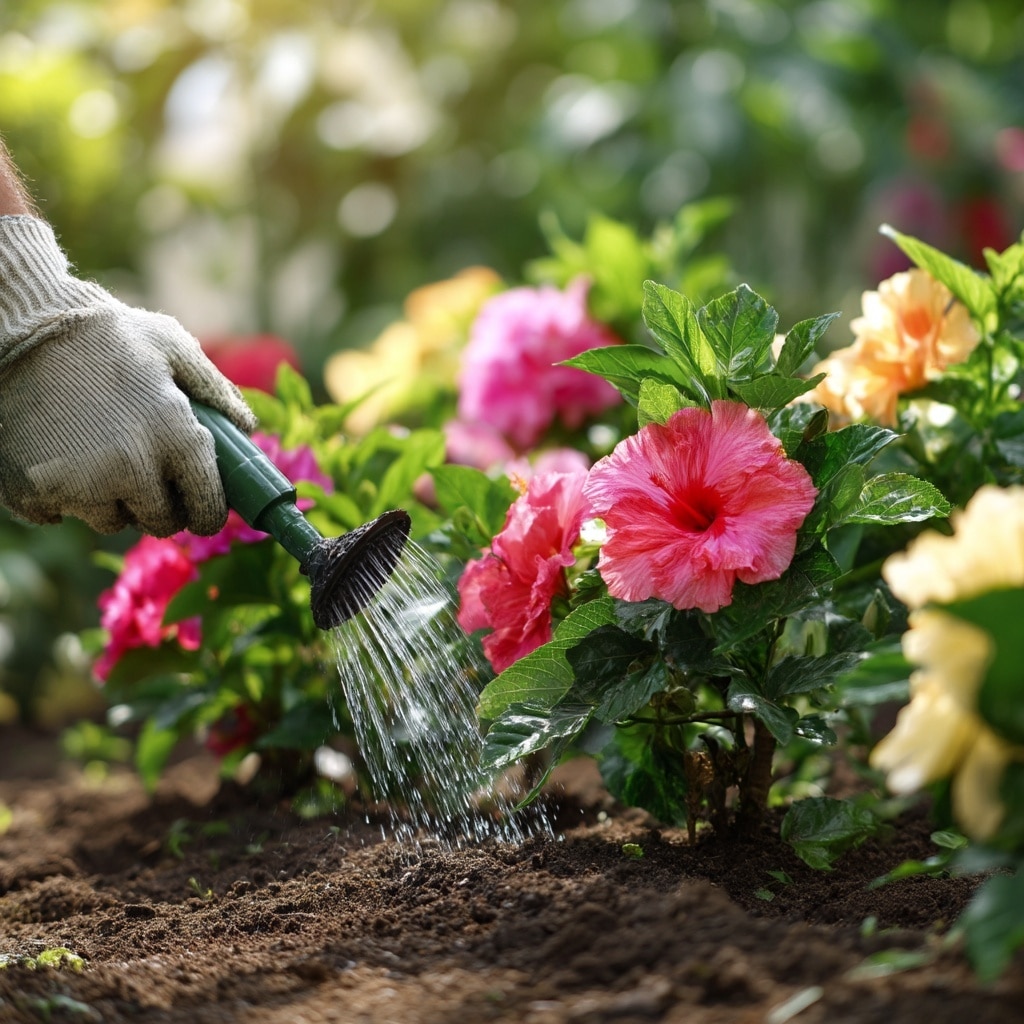
Healthy care practices are key to helping every hibiscus flower burst with color and vitality. Whether you’re growing tropical or hardy varieties, following the right routine ensures your plants remain lush, strong, and continuously blooming.
Light Needs
Hibiscus loves sunshine. Aim for at least six hours of direct sunlight daily to promote abundant flowering. In very hot climates, partial afternoon shade can prevent stress on the leaves.
Soil Requirements
Well-draining, slightly acidic soil rich in organic matter is ideal. Mixing compost or peat moss into the soil helps retain moisture while preventing waterlogging.
Watering
Hibiscus plants need consistently moist soil but dislike soggy roots. Water when the top inch of soil feels dry—more often during hot weather and less in winter.
Fertilizing
Feed with a high-potassium fertilizer every two weeks during the growing season. Avoid high-nitrogen blends, as they encourage leaves instead of flowers.
Pruning
Prune lightly after flowering to maintain shape and encourage new growth. Removing dead or crossing branches improves airflow and plant health.
Pests and Diseases
Watch out for aphids, whiteflies, and spider mites. Neem oil or insecticidal soap works well as a natural remedy. Ensure proper spacing to reduce fungal risks.
Overwintering
In cold regions, bring potted hibiscus indoors before frost. Keep them near a bright window and reduce watering until spring.
9. Conclusion
The hibiscus flower is a true showstopper—vivid, versatile, and surprisingly easy to grow. With colors ranging from fiery reds to tranquil blues, it adds character and charm to any outdoor space. By understanding the right varieties for your climate and following proper care techniques, you can enjoy a garden bursting with tropical elegance all year round.
Whether you prefer the bold statement of red blooms or the calming presence of white and pink varieties, hibiscus flowers promise to bring beauty, texture, and life to your garden in every season.
So, grab your gardening gloves and start planting your favorite hues—your garden is about to bloom in color and joy!

